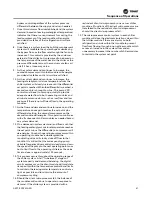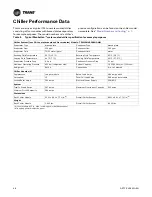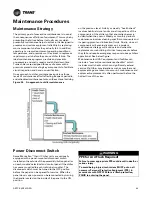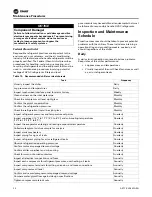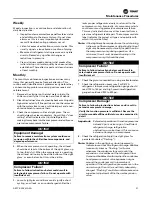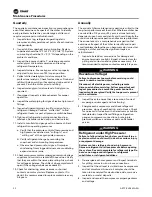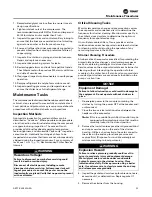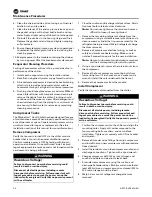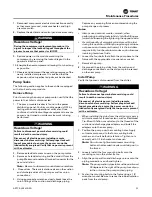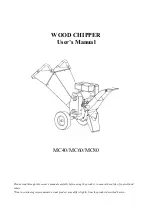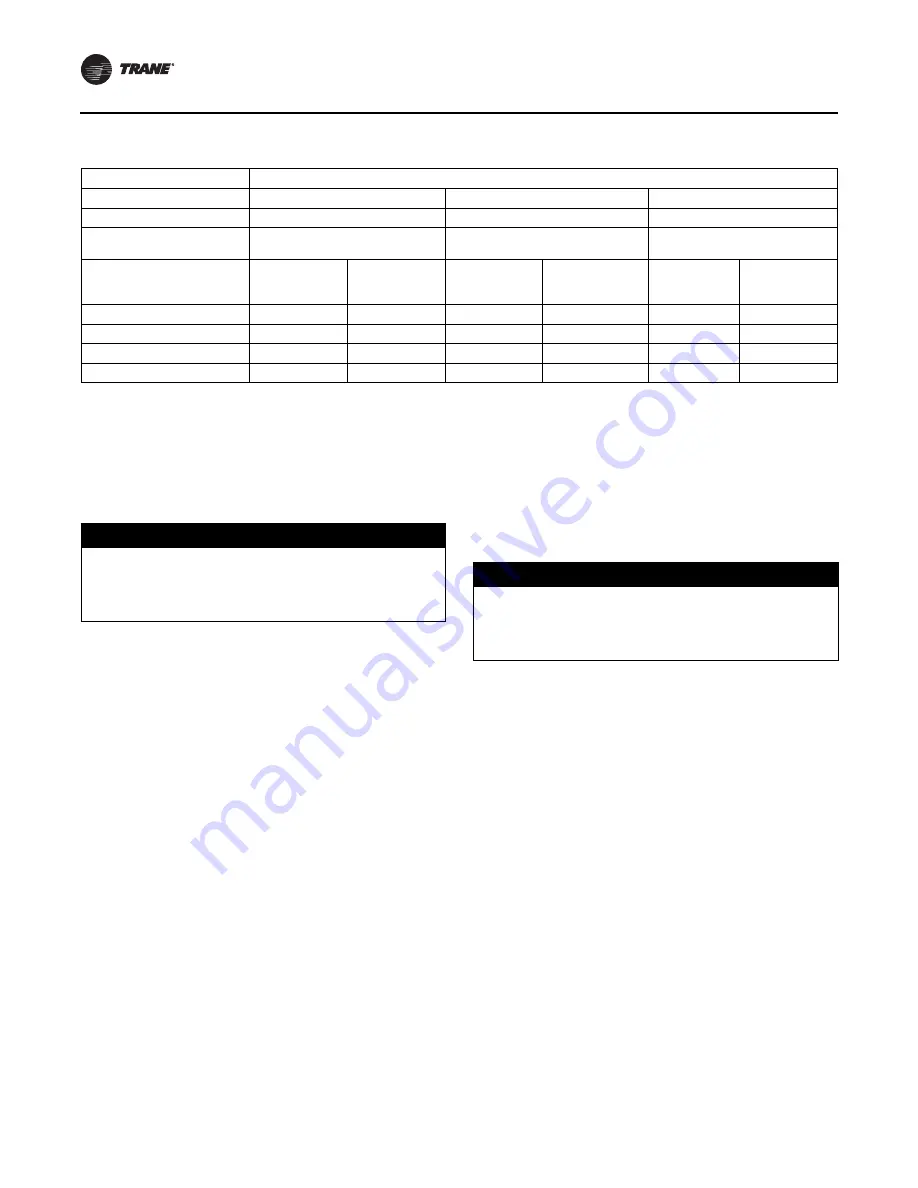
Operating Procedures
40
ARTC-SVX002A-EN
A 10% to 50% solution of glycol should be added to
prevent pipe corrosion regardless of the fluid temperature.
Propylene glycol has corrosion inhibitors that protect
piping and components from corrosion and buildup of rust
and other deposits. Trane recommends against using
water/glycol solution in excess of 50% regardless of the
ambient temperature conditions.
Note:
If glycol-free solutions are mandated at the chiller
site, special inhibitors are available for rust
prevention, mineral deposit inhibition, and
biological suppression. Adding these inhibitors to
the water solution is strongly recommended.
Heaters, heat tracing cable, and closed cell insulation can
be installed on any exposed “wet” chiller components and
tank and pump modules for protection against freezing in
low ambient temperature and low refrigerant pressure
conditions. However, the best freeze prevention is using
the appropriate concentration of glycol. Trane does not
warranty any component that fails due to freezing.
Prevent Freezing
Many liquids expand in volume upon cooling. This
expansion may cause pipes and other enclosed systems
containing a liquid to rupture or burst when exposed to
low temperature conditions. Burst protection is needed to
protect piping and other enclosed systems when they are
inactive as they could rupture due to expansion during
cold weather or low refrigerant pressure.
Freeze points and burst points of glycol-water solutions
are shown in
In order to maintain a high quality glycol solution, the
water used in the glycol mixture must have very few
impurities. Impurities in the water can increase metal
corrosion, aggravate pitting of cast iron and steel, reduce
the effectiveness of the corrosion inhibitors, and increase
the depletion rate of the inhibitor package.
To assure inhibitor effectiveness, the levels of chlorides
and sulfates in the water should not exceed 25 ppm each.
The total hardness in terms of calcium carbonate should
be less than 100 ppm. For best long-term results, de-
ionized or distilled water is recommended. Trane can
provide concentrated solutions of Dowfrost, propylene
glycol, or premixed solutions for use with the chiller.
Propylene Glycol
Glycol-based fluids provide such burst protection in water
solutions due to their low freezing points. As a glycol-
based fluid cools below the solution’s freezing point, ice
crystals begin to form, and the remaining solution
becomes more concentrated in glycol. This ice/water/
glycol mixture results in a flowable slush, and remains
fluid, even as the temperature continues to cool.
The fluid volume increases as this slush forms and the
temperature cools, flowing into available expansion
volume in the chiller. If the concentration of glycol is
sufficient, no damage to the chiller from fluid expansion
should occur within the temperature range indicated in
. When liquids are cooled they eventually
either crystallize like ice or become increasingly viscous
until they fail to flow and set up like glass. The first type of
behavior represents true freezing. The second is known as
super-cooling. Glycols do not have sharp freezing points.
Under normal conditions, propylene glycol sets to a glass-
like solid, rather than freezing.
The addition of glycol to water yields a solution with a
freezing point below that of water. This has led to the
extensive use of glycol-water solutions as cooling media
at temperatures appreciably below the freezing point of
water. Instead of having sharp freezing points, glycol-
Table 7.
Glycol performance impact factors
Range Factor
Glycol Concentration Percentages and Performance Impact
Propylene Glycol Concentration
30%
40%
50%
Lowest Ambient Temperature
10 °F (-12 °C)
-4 °F (-10 °C)
-20 °F (-29 °C)
Recommended Minimum
Leaving Fluid Temperature
25 °F (-4 °C)
10 °F (-12 °C)
-10 °F (-23 °C)
Leaving Temperature
Capacity
Reduction
Factor
Pressure Drop
Factor
Capacity
Reduction
Factor
Pressure Drop
Factor
Capacity
Reduction
Factor
Pressure Drop
Factor
70 °F (21 °C)
0.96
1.27
0.93
1.43
0.91
1.63
60 °F (15.6 °C)
0.95
1.31
0.92
1.47
0.90
1.68
55 °F (13 °C)
0.95
1.31
0.92
1.50
0.89
1.73
50 °F (10 °C)
0.94
1.33
0.91
1.51
0.88
1.75
NOTICE
Equipment Damage!
Failure to follow instructions below could result in
permanent damage to pump and internal cooling
surfaces. Do not use automotive antifreeze.
NOTICE
Equipment Damage!
Failure to follow instructions below could result in
permanent damage to pump and internal cooling
surfaces. Do not use automotive antifreeze.






















